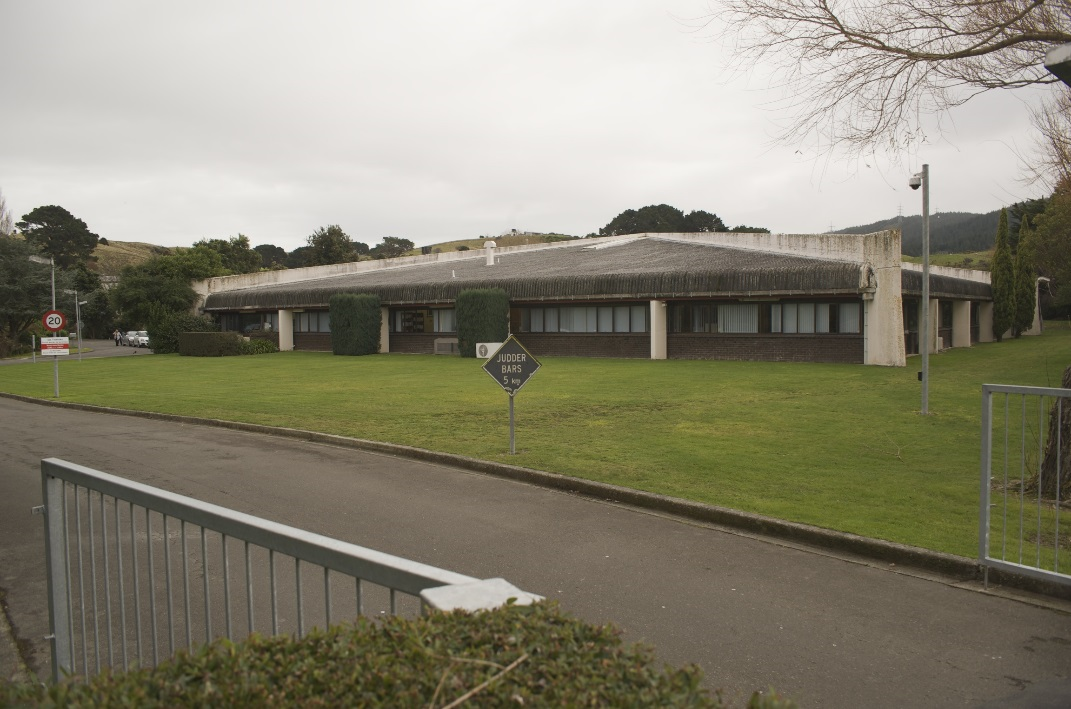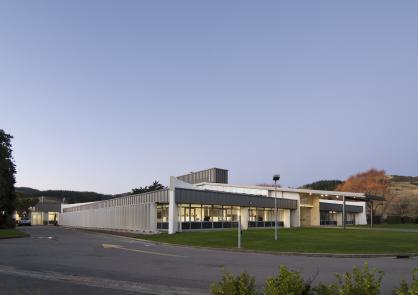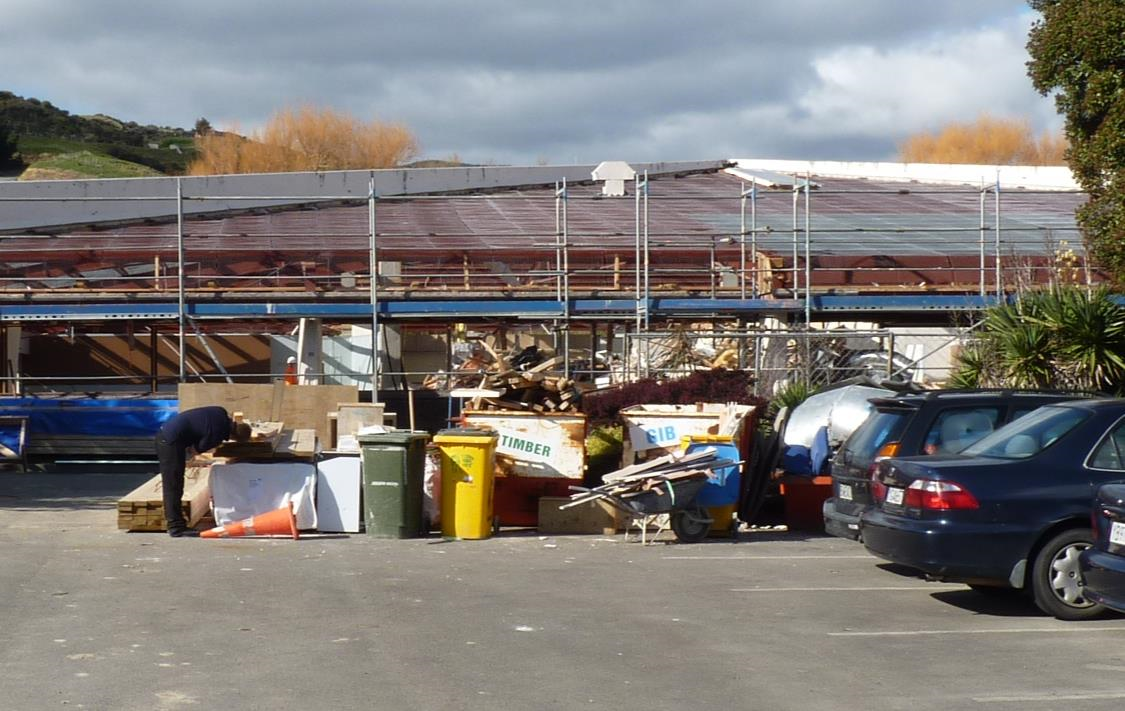| Client | BRANZ Ltd |
|---|---|
| Site | BRANZ Campus, Judgeford, Porirua |
| Timeframe | April 2010 to March 2012 |
| Main contractor | Fletcher Construction |
| Demolition subcontractor | Quality Demolition |
| Construction waste manager | Transpacific Waste Management |


From 2010 to 2012, BRANZ undertook a complete renovation of two of the main buildings on our Judgeford Campus - Totara and Rimu. These 1970s buildings still had most of their original layout, carpet and decoration.
The Totara office building was virtually rebuilt using the existing floor slab and the concrete cross-beam structure, which was incorporated into the new design by Warren and Mahoney.
The Rimu building, containing several large laboratory spaces as well as offices, was carefully refurbished in sections to minimise disruption to ongoing testing. This had the additional benefit of allowing new testing equipment to be installed and calibrated in the new, highly efficient climate-controlled spaces.
A new office building, Nikau, was constructed at the northern end of the site. A link building was built between Rimu and the existing workshop, and a new cafeteria was built between Totara and Rimu.
BRANZ has a strong environmental ethos with regards to sustainable design and construction processes. As a result, one of the critical components of the design and construction included a focus on waste reduction during the build, then energy efficiency in operation. The project aim was to recycle 90% of the construction waste - a figure that was exceeded.
The BRANZ renovation case study successfully recycled or reused 77% of demolition waste and 92% of construction waste.
Demolition waste recycling
The Totara building was almost completely demolished, apart from the floor slab and the structural concrete beams criss-crossing the building. The inside of Rimu was gutted during the demolition stage, as were the workshops at the northern end of the campus. The demolition stage of the BRANZ refurbishment achieved the results shown below.
| Waste material type | Repurposed or recycled off site (tonnes) | Disposal off site (tonnes) | Comments |
|---|---|---|---|
| Excavated material | 691.9 | Cleanfill reused on site or in Kaitoke | |
| Concrete | 84.5 | T&T crushed and reused | |
| Metal | 23.3 | ||
| Untreated timber | 37.7 | Sold as firewood | |
| General waste | 205.9 | ||
| Asbestos | 46.6 | Wrapped, sealed, and encapsulated off site | |
| Total | 252.5 | ||
| Percentage recycled | 77% |
Fletcher Construction aimed to reuse and recycle as much of the demolition and construction materials as possible. It reused 77% of the demolition material, despite contending with an asbestos roof that had to be carefully removed, wrapped, sealed and landfilled at a secure site.
All of the waste was sorted into bins on site and reused by BRANZ and Fletcher staff wherever possible. What wasn't reused on site was taken off site, weighed and distributed. Of the 1,089.9 tonnes of demolition waste generated, 837.4 tonnes were recycled.
The success of the waste management of this project relied on several key aspects:
- The Fletcher Construction staff were all advised from the start that waste was to be a critical focus in the work, and material taken off site was carefully measured and documented before disposal.
- All staff were inducted into the waste management plan.
- BRANZ and Fletcher staff could request waste materials.
- Daily meetings were held to plan for salvage during the day's demolition.
- The centre of the building was demolished and all material taken away in truckloads to a sorting facility.
- Concrete and masonry was crushed up and recycled into aggregate off site.
- Untreated timber was sold as firewood.
- Much of the excavated cleanfill and topsoil was moved to remote areas of the site.
- Exported cleanfill was reused on a project in Kaitoke, north of Upper Hutt.
- A 50-year-old rimu tree was relocated to another part of the site.
- A square-section steel stairway with timber treads was reused to save on waste and cost.
In addition, certain fixtures and fittings that were deemed to be safe to rehome were advertised to staff at BRANZ and Fletcher Construction. This included seating from the old cafeteria and the near-new light fixtures. Old, inefficient appliances were recycled, and new, efficient appliances were retained.
If asbestos had not been present in the roof and some internal linings, the demolition phase would have achieved recycling figures of upwards of 80% of the demolition waste.
Construction waste recycling
The construction phase of the project involved reconstructing the Totara (1,521 m²) and Rimu (1,078 m²) buildings, the workshop refurbishment and constructing the new workshop link (540 m²), the new Nikau building and link (346.6 m²) and the new cafeteria link (112.5 m²).
The construction stage of the BRANZ refurbishment achieved the results shown below.
| Waste material type | Repurposed or recycled off site (tonnes) | Disposal off site (tonnes) | Comments |
|---|---|---|---|
| Mixed (plastic #1 and 2, tin/aluminium cans, glass bottles) | 0.9 | Taken to recycling depot, sorted and recycled. | |
| Paper and cardboard | 3.3 | ||
| Metal | 66.4 | ||
| Untreated timber | 14.1 | ||
| Treated timber | 52.8 | ||
| Plastic #4 and 5 | 3.8 | ||
| Plasterboard | 76.4 | ||
| Concrete | 315.1 | ||
| General waste | 45.3 | Landfilled | |
| Total | 532.7 | 45.3 | |
| Percentage recycled | 92% | ||
What worked
Buy-in from staff for minimising waste and reusing materials was high. With permission, staff were able to rehome some of the waste materials for personal projects. During the construction phase, much of the untreated timber was taken for firewood. The quantity of waste diverted in this way was not weighed and therefore not recorded.
The centralised off-site sorting facilities enabled those working in more remote or constrained parts of the campus to put recyclables into one bin for sorting later.
